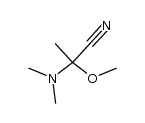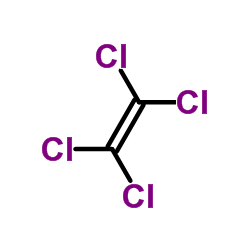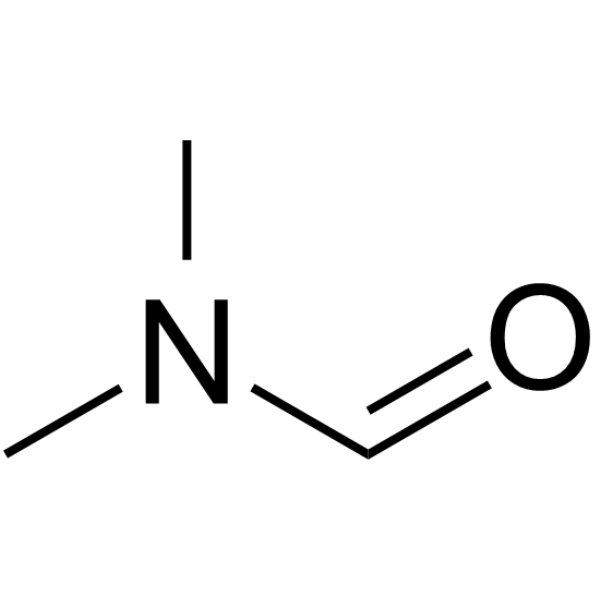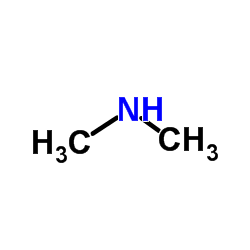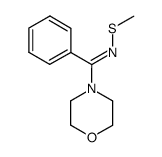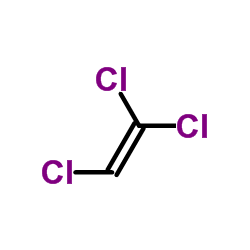631-67-4
| Name | N,N-Dimethylthioacetamide |
|---|---|
| Synonyms |
N,N-dimethylethanethioamide
MFCD00022178 |
| Density | 0.966g/cm3 |
|---|---|
| Boiling Point | 125-127ºC 22mm |
| Melting Point | 71-73ºC |
| Molecular Formula | C4H9NS |
| Molecular Weight | 103.18600 |
| Exact Mass | 103.04600 |
| PSA | 35.33000 |
| LogP | 0.89530 |
| Index of Refraction | 1.503 |
|
Version 1.0
Regulation (EC) No 1907/2006 1 - Product and Company Information Product NameN,N-DIMETHYLTHIOACETAMIDE - 250 MG 2 - Hazards Identification SPECIAL INDICATION OF HAZARDS TO HUMANS AND THE ENVIRONMENT Harmful if swallowed.
3 - Composition/Information on Ingredients Product NameCAS #EC noAnnex I Index Number N,N-DIMETHYLTHIOACETAMIDE631-67-4 NoneNone FormulaC4H9NS Molecular Weight 103,1800 AMU 4 - First Aid Measures AFTER INHALATION If inhaled, remove to fresh air. If not breathing give artificial respiration. If breathing is difficult, give oxygen. AFTER SKIN CONTACT In case of skin contact, flush with copious amounts of water for at least 15 minutes. Remove contaminated clothing and shoes. Call a physician. AFTER EYE CONTACT In case of contact with eyes, flush with copious amounts of water for at least 15 minutes. Assure adequate flushing by separating the eyelids with fingers. Call a physician. AFTER INGESTION If swallowed, wash out mouth with water provided person is conscious. Call a physician. 5 - Fire Fighting Measures ALDRICHwww.molbase.com EXTINGUISHING MEDIA Suitable: Carbon dioxide, dry chemical powder, or appropriate foam. Water spray. SPECIAL RISKS Specific Hazard(s): Emits toxic fumes under fire conditions. SPECIAL PROTECTIVE EQUIPMENT FOR FIREFIGHTERS Wear self-contained breathing apparatus and protective clothing to prevent contact with skin and eyes. 6 - Accidental Release Measures PERSONAL PRECAUTION PROCEDURES TO BE FOLLOWED IN CASE OF LEAK OR SPILL Evacuate area. PROCEDURE(S) OF PERSONAL PRECAUTION(S) Wear self-contained breathing apparatus, rubber boots, and heavy rubber gloves. METHODS FOR CLEANING UP Absorb on sand or vermiculite and place in closed containers for disposal. Ventilate area and wash spill site after material pickup is complete. 7 - Handling and Storage HANDLING Directions for Safe Handling: Avoid prolonged or repeated exposure. Do not breathe vapor. Avoid contact with eyes, skin, and clothing. STORAGE Conditions of Storage: Keep tightly closed. 8 - Exposure Controls / Personal Protection ENGINEERING CONTROLS Safety shower and eye bath. Mechanical exhaust required. GENERAL HYGIENE MEASURES Wash thoroughly after handling. PERSONAL PROTECTIVE EQUIPMENT Respiratory Protection: Use respirators and components tested and approved under appropriate government standards such as NIOSH (US) or CEN (EU). Where risk assessment shows air-purifying respirators are appropriate use a full-face respirator with multi-purpose combination (US) or type ABEK (EN 14387) respirator cartridges as a backup to engineering controls. If the respirator is the sole means of protection, use a full-face supplied air respirator. Hand Protection: Compatible chemical-resistant gloves. Eye Protection: Chemical safety goggles. 9 - Physical and Chemical Properties AppearancePhysical State: Liquid PropertyValueAt Temperature or Pressure ALDRICHwww.molbase.com pH N/A BP/BP RangeN/A MP/MP RangeN/A Flash PointN/A FlammabilityN/A Autoignition TempN/A Oxidizing Properties N/A Explosive Properties N/A Explosion LimitsN/A Vapor PressureN/A Partition Coefficient Log Kow: 0,398 ViscosityN/A Vapor DensityN/A Saturated Vapor Conc. N/A Evaporation RateN/A Bulk DensityN/A Decomposition Temp.N/A Solvent ContentN/A Water ContentN/A Surface TensionN/A ConductivityN/A Miscellaneous DataN/A SolubilityN/A 10 - Stability and Reactivity STABILITY Stable: Stable. Materials to Avoid: Strong oxidizing agents. HAZARDOUS DECOMPOSITION PRODUCTS Hazardous Decomposition Products: Carbon monoxide, Carbon dioxide, Sulfur oxides. HAZARDOUS POLYMERIZATION Hazardous Polymerization: Will not occur 11 - Toxicological Information ACUTE TOXICITY LD50 Intraperitoneal Mouse 500 MG/KG SIGNS AND SYMPTOMS OF EXPOSURE To the best of our knowledge, the chemical, physical, and toxicological properties have not been thoroughly investigated. ROUTE OF EXPOSURE Skin Contact: May cause skin irritation. Skin Absorption: May be harmful if absorbed through the skin. Eye Contact: May cause eye irritation. Inhalation: Material may be irritating to mucous membranes and upper respiratory tract. May be harmful if inhaled. Ingestion: Harmful if swallowed. 12 - Ecological Information ALDRICHwww.molbase.com No data available. 13 - Disposal Considerations SUBSTANCE DISPOSAL Contact a licensed professional waste disposal service to dispose of this material. Dissolve or mix the material with a combustible solvent and burn in a chemical incinerator equipped with an afterburner and scrubber. Observe all federal, state, and local environmental regulations. 14 - Transport Information RID/ADR Non-hazardous for road transport. IMDG Non-hazardous for sea transport. IATA Non-hazardous for air transport. 15 - Regulatory Information CLASSIFICATION AND LABELING ACCORDING TO EU DIRECTIVES INDICATION OF DANGER: Xn Harmful. R-PHRASES: 22 Harmful if swallowed. Caution: Substance not yet fully tested (EU). 16 - Other Information WARRANTY The above information is believed to be correct but does not purport to be all inclusive and shall be used only as a guide. The information in this document is based on the present state of our knowledge and is applicable to the product with regard to appropriate safety precautions. It does not represent any guarantee of the properties of the product. Inc., shall not be held liable for any damage resulting from handling or from contact with the above product. See reverse side of invoice or packing slip for additional terms and conditions of sale. Copyright 2010 Co. License granted to make unlimitedpaper copies for internal use only. DISCLAIMER For R&D use only. Not for drug, household or other uses. ALDRICHwww.molbase.com SECTION 16 - ADDITIONAL INFORMATION N/A |
CHEMICAL IDENTIFICATION
HEALTH HAZARD DATAACUTE TOXICITY DATA
|
| Hazard Codes | Xn |
|---|---|
| Risk Phrases | 36/37/38 |
| Safety Phrases | S26;S36/S37/S39 |
| HS Code | 2930909090 |
|
~93% 
631-67-4 |
| Literature: Bezgubenko; Pipko; Sinitsa Russian Journal of General Chemistry, 2008 , vol. 78, # 7 p. 1341 - 1344 |
|
~71% 
631-67-4 |
| Literature: Kantlehner, Willi; Haug, Erwin; Farkas, Michael Liebigs Annalen der Chemie, 1982 , # 8 p. 1582 - 1587 |
|
~22% 
631-67-4 |
| Literature: Sultangareev; Rozinov; Albanov; Voronkov Russian Journal of General Chemistry, 2003 , vol. 73, # 2 p. 325 - 326 |
|
~% 
631-67-4 |
| Literature: Tetrahedron, , vol. 46, # 11 p. 3921 - 3928 |
|
~% 
631-67-4 |
| Literature: Journal of the Chemical Society, Perkin Transactions 1: Organic and Bio-Organic Chemistry (1972-1999), , # 12 p. 2933 - 2935 |
|
~% 
631-67-4 |
| Literature: Russian Journal of General Chemistry, , vol. 73, # 2 p. 325 - 326 |
|
~% 
631-67-4 |
| Literature: Tetrahedron Letters, , vol. 24, # 52 p. 5885 - 5886 |
| HS Code | 2930909090 |
|---|---|
| Summary | 2930909090. other organo-sulphur compounds. VAT:17.0%. Tax rebate rate:13.0%. . MFN tariff:6.5%. General tariff:30.0% |


